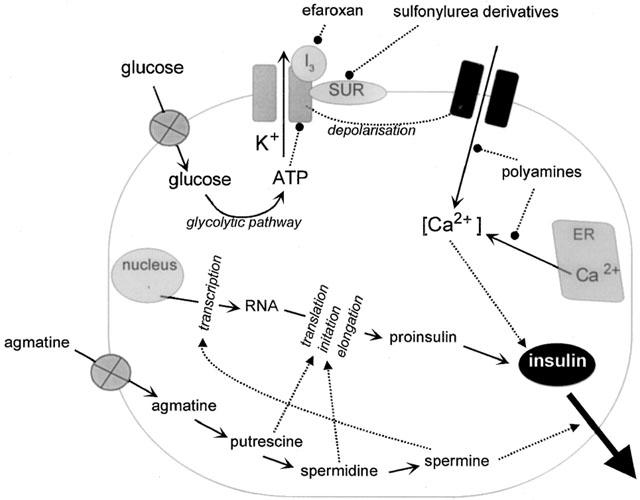Figure 2.

Current working hypothesis depicting mechanisms regulating insulin secretion from pancreatic β-cells and proposed sites for interference by agmatine. ATP generated by glucose metabolism shuts down K+-channels, resulting in depolarization and subsequent influx of Ca2+ through voltage-activated Ca2+-channels. This influx of Ca2+ increases cytosolic Ca2+ concentration, which is accompanied by mobilization of Ca2+ from the endoplasmic reticulum (ER), an event triggering secretory granule translocation and exocytotic release of insulin. The respective binding of imidazolines (such as efaroxan) and sulphonylurea derivatives (such as glibenclamide) to I3-binding sites and the sulphonylurea receptor, also closes the K+-channels. Agmatine does not bind to I3-binding sites. However, agmatine may enhance insulin secretion via its metabolites, after it is taken up by specific transporters. Putrescine, spermidine are necessary for proinsulin biosynthesis, whereas spermine may exert a stimulatory or permissive role in RNA transcription and long-term insulin release. Polyamines are also probably involved in regulation of cytosolic Ca2+-concentration by blocking Ca2+-influx and its release from intracellular stores. Abbreviations: …▪quot; : stimulation; …•: inhibition.
